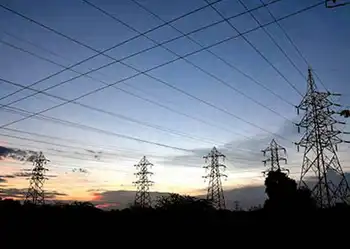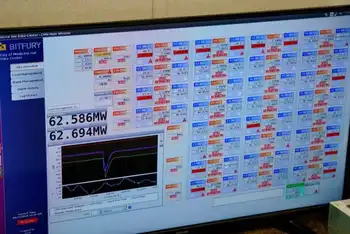U.S. Tax Laws Will Drive Grid Upgrade
Los Angeles, CA -- - Attracting the billions in capital needed to expand the North American electricity grid will depend more on changes to the tax code than on higher utility bills for consumers.
Last week's massive power outages in the Northeast and Midwest came at a time when congressional conferees were waiting to begin negotiations on comprehensive energy legislation that would have attempted to tackle the complex task of making investments in infrastructure more attractive while at the same time offering consumers some shelter from major rate hikes.
"The electricity title of the legislation we have worked on over the past two years has typically been the most complicated and difficult area (of the bill),"
Energy Secretary Spencer Abraham said Tuesday during a news conference in Washington. "There has been a misconception going around that there is a tremendous consensus on electricity while everything else is complicated."
Abraham caused some fearful gasps around the country during the weekend when he told CBS's "Face the Nation" that the price tag for bringing the nation's grid up to snuff could reach as high as $50 billion, with ratepayers picking up a chunk of the tab because "they are the ones that benefit."
The secretary may have jumped the gun somewhat due to the fact that expansion of the grid will not be accomplished through any single public works project, but instead through a series of private projects in which companies provide the capital in anticipation of a respectable return on their investment.
To that end, the industry has been far more interested in tax breaks for such investments than they are in inflating electric bills for already hard-pressed consumers.
"The electric utility industry recognizes the crucial importance of reinforcing the reliability of what we believe is the best electric power system in the world," said Thomas Kuhn, president of the Edison Electric Institute. "While there is clearly no single magic bullet to achieve this, we believe strongly that House and Senate lawmakers have an unparalleled opportunity to craft a final (bill) that contains critically important steps to help ensure electric system reliability and bolster transmission capacity."
The EEI lists tax changes and increased technical standardization as the major provisions of the Energy Bill that will draw increased investment in the grid. According to the energy industry association's fact sheet on the bill, transmission assets currently "receive less favorable tax treatment than other critical infrastructure and technologies."
As a result, expansion of the transmission infrastructure has not been keeping up with the increasing amount of power humming across the existing lines in response to higher demand; for instance, a decade ago, every household did not have at least one or two computers on at all times, nor did business have infantries of computers on 24 hours a day.
"It's like driving a car at 30 mph and having a tire blow out versus the same scenario while driving 100 mph," noted Philip Mihlmester, senior vice president of ICF Consulting in Washington. "There is very little reaction time in the latter case."
In addition, the industry may face new questions about security due to the unconfirmed claims attributed to al-Qaida that terrorists brought the whole system down last week. A costly security upgrade could cut further into the return transmission companies receive.
IFC released a report Tuesday stating that the need to accommodate expansion of the grid was sometimes in conflict with the desire to keep a lid on retail power prices; however another industry consultant predicted Tuesday that the overall cost of infrastructure expansion would be well below what Abraham predicted and, therefore, not a great burden would be passed on to ratepayers.
"While the total absolute dollars of investment necessary to bring the grid up to 21st century standards is very high -- perhaps in the order of between $30 billion and $50 billion on the outside -- the impact that we have estimated on customer bills seems manageable, and less than implied by many in the industry," said Richard Rudden, CEO of R.J. Rudden Associates in Hauppauge, N.Y.
Rudden contended that the impact of a major upgrade on residential ratepayers would amount to some $50 to $125 over five years.
"This is comparable to the cost of a refrigerator's or freezer's worth of spoiled food, a month's worth of gasoline, or a not-even-so-great night on the town," Rudden joked.
That relatively modest figure, however, assumes that the tax code has been changed to allow a healthy return on investment, and to improve the depreciation rate for both new transmission facilities and for improved technologies that will help operators run more electricity across existing wires.
Rudden said the next step would up to Congress, FERC and state governments to forge a strategy to create a favorable investment climate. Boiling down the numbers to $50 per household instead of a $50 billion total may be what Congress needs to enact new electricity regulations -- as if seeing New York City plunged into darkness wasn't enough.
Related News

India's electricity demand falls at the fastest pace in at least 12 years
DELHI - India's power demand fell at the fastest pace in at least 12 years in October, signalling a continued decline in the industrial output, according to government data. Electricity has about 8% weighting in the country's index for industrial production.
India needs electricity to fuel its expanding economy but a third decline in power consumption in as many months points to tapering industrial activity in a nation that aims to become a $5 trillion economy by 2024.
India's industrial output fell at the fastest pace in over six years in September, adding to a series of weak indicators that suggests that…




